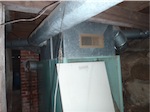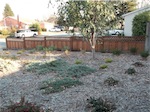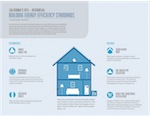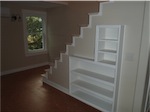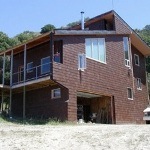Everyone enjoys a nice long hot shower. It does come with some cost for the water and don’t forget the associated cost to heat the water. The ideal situation is to apply the water only toward the person and avoid as much as waste as possible. Current federal standards require that shower heads deliver no more than 2.5 gpm (gallons per minute). Except for older homes that have not been renovated, most homes are already equipped with shower heads that comply with this federal standard.
New recommendations are to lower the shower head flow rate to 1.5 gpm. Manufacturers are designing products by controlling the size and shape of the water droplets so that a lower flow rate does not cause perceptible loss in comfort. Products approaching the new recommended flow rate are already in the market.
Potential water savings are shown in the table
| Regular Shower Head | Low Flow Shower Head | Difference | |
|---|---|---|---|
| Flow Rate (gpm) | 2.2 | 1.5 | -0.7 |
| Average Shower Duration (min) | 8.2 | 8.2 | 0 |
| Average Showers Per Capita Per Day | 0.67 | 0.67 | 0 |
| Average Volume Per Capita Per Day (gallons) | 12.1 | 8.2 | -3.8 |
| Average Volume Per Capita Per Year (gallons) | 4411.7 | 3008.0 | -1403.7 |
Things That Can Be Done
- If you have a very old shower head, definitely change to a product with 2.5 gpm or lower flow rate.
- Install a shower head with a shut-off button or install one as an add-on. The button temporarily stops water flow while soaping or shampooing but does not alter the hot/cold water mix.
- Consider shortening shower times, within limits of comfort and hygiene.
- Avoid installing multiple shower heads within a stall.
- Install a heat recovery system from the shower drainage. See a related story from our hot water expert This forum provides you with resources about home renovation, improvement, makeover and repair topics such as air condition, bathroom design, cabinet replacement, construction, countertop selection, drought tolerant landscape, drought tolerant plants, finding contractors, flooring, furnace, furniture, gardening, heating system, home design, hot water heater, interior design, landscape planning, landscape replacement, low flow toilets, moisture management, non-toxic material, paint selection, saving water, solar system, window replacement, and many others. While we focus on issues in California, particularly in the San Francisco Bay Area, San Jose, Oakland, Berkeley, Dublin, Marin, Menlo Park, Moraga, Orinda, Pleasanton, San Mateo, Santa Clara, Solano, Sonoma, Walnut Creek, most information is applicable in all parts of USA as well as the rest of the world.


